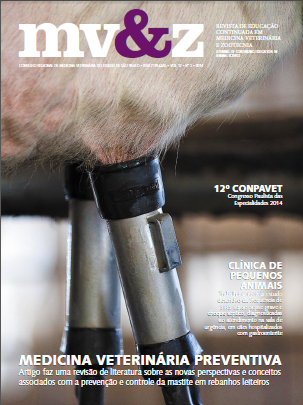Occurrence of anti- Toxoplasma gondii antibodies in stray Felis domesticus living in public park at Marília city, São Paulo, Brazil
Main Article Content
Abstract
relationship and in this condition, highlights the care with the
zoonoses such as Toxoplasmosis, which has felines as the only
definitive hosts in its life cycle. Accordingly, we have evaluated the
occurrence of anti-T. gondii in 50 stray cats of Municipal Grove in
Marilia / SP, divided into three age groups: A) six months to two
years, B) upper two and lower five years old and C) five years old or
more, using the serological examination by immunofluorescence
with indirect cutoff of 16. Of the 50 samples analyzed, 13 were
reagents (26%), nine in the 1:16 dilution (18%), three in 1:64
(6%) and one in 1: 256 (2%). Among the positive, 17.85%
(5/28) were females and 36.36% (8/22) of males. Regarding
age, six of 17 cats from Group B and seven of 15 from group C
have shown antibodies against coccidia and none of the Group
A was positive. The statistic demonstrates significant difference
compared to the form of reactive serum samples dichotomized as
well as a significant association between variables seropositivity
and age, reflecting higher rate of infection in older animals. It
is expected an awareness about the disease, and promotion of
preventive actions directed to the public health.
Article Details
1. Autores mantém os direitos autorais e concedem à revista o direito de primeira publicação, com o trabalho licenciado sob a Creative Commons Atribuição-NãoComercial-SemDerivações 4.0 Internacional
2. Autores têm autorização para assumir contratos adicionais separadamente, para distribuição não-exclusica da versão do trabalho publicada nesta revista (ex.: publicar em repositório institucional ou como capítulo de livro), com reconhecimento de autoria e publicação inicial nesta revista.
3. Autores têm permissão e são estimulados a publicar e distribuir seu trabalho online (ex.: em repositórios instituicionais ou na sua página pessoal) a qualquer ponto antes ou durante o processo editorial, já que isso pode gerar alterações produtivas, bem como aumentar o impacto e a citação do trabalho publicado (Veja O Efeito do Acesso Livre);
